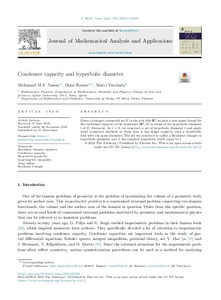Living, dead, and absent trees-How do moth outbreaks shape small-scale patterns of soil organic matter stocks and dynamics at the Subarctic mountain birch treeline?
Xu Yi; Biasi Christina; Karjalainen Katri; Adamczyk Sylwia; Myller Kristiina; Meyer Nele; Karhu Kristiina; Sietiö Outi-Maaria; Mganga Kevin; Suominen Otso; van Delden Lona; Martin Angela
https://urn.fi/URN:NBN:fi-fe2022081155028
Tiivistelmä
Mountain birch forests (Betula pubescens Ehrh. ssp. czerepanovii) at the subarctic treeline not only benefit from global warming, but are also increasingly affected by caterpillar outbreaks from foliage-feeding geometrid moths. Both of these factors have unknown consequences on soil organic carbon (SOC) stocks and biogeochemical cycles. We measured SOC stocks down to the bedrock under living trees and under two stages of dead trees (12 and 55 years since moth outbreak) and treeless tundra in northern Finland. We also measured in-situ soil respiration, potential SOC decomposability, biological (enzyme activities and microbial biomass), and chemical (N, mineral N, and pH) soil properties. SOC stocks were significantly higher under living trees (4.1 +/- 2.1 kg m2) than in the treeless tundra (2.4 +/- 0.6 kg m2), and remained at an elevated level even 12 (3.7 +/- 1.7 kg m2) and 55 years (4.9 +/- 3.0 kg m2) after tree death. Effects of tree status on SOC stocks decreased with increasing distance from the tree and with increasing depth, that is, a significant effect of tree status was found in the organic layer, but not in mineral soil. Soil under living trees was characterized by higher mineral N contents, microbial biomass, microbial activity, and soil respiration compared with the treeless tundra; soils under dead trees were intermediate between these two. The results suggest accelerated organic matter turnover under living trees but a positive net effect on SOC stocks. Slowed organic matter turnover and continuous supply of deadwood may explain why SOC stocks remained elevated under dead trees, despite the heavy decrease in aboveground C stocks. We conclude that the increased occurrence of moth damage with climate change would have minor effects on SOC stocks, but ultimately decrease ecosystem C stocks (49% within 55 years in this area), if the mountain birch forests will not be able to recover from the outbreaks.
Kokoelmat
- Rinnakkaistallenteet [19207]
